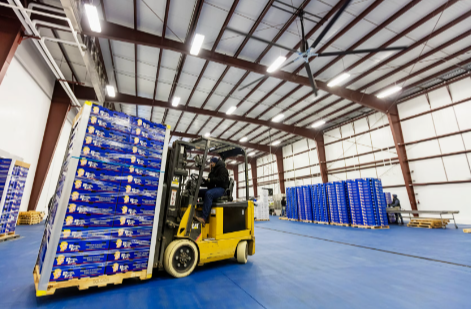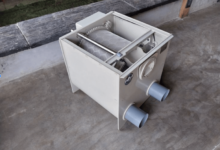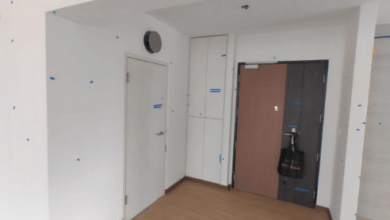From Installation to Maintenance: Best Practices for HVLS Fans in Warehouses

High Volume Low Speed (HVLS) fans are an essential asset for modern warehouses, providing numerous benefits such as improved air circulation, enhanced employee comfort, and energy efficiency. To maximize these benefits, it’s crucial to follow best practices for the installation and maintenance of HVLS fans. This comprehensive guide will walk you through the key steps and considerations to ensure your HVLS fans operate at their peak performance.
Installation Best Practices
1. Proper Site Assessment
Before installation, conduct a thorough site assessment to determine the optimal placement of HVLS fans. Consider factors such as ceiling height, floor layout, and existing obstacles. The goal is to maximize air movement and ensure uniform air distribution throughout the warehouse.
2. Structural Analysis
Ensure that the structure where the fan will be mounted can support the weight and operational load of the HVLS fan. This typically involves consulting with a structural engineer to verify that beams and supports are adequate.
3. Compliance with Building Codes
Adhere to local building codes and regulations during the installation process. This includes electrical standards and fire safety requirements. Non-compliance can lead to operational hazards and potential legal issues.
Read more Urban Oasis: Maximizing Space with Pool Landscaping in Dubai Homes
4. Professional Installation
Hire experienced professionals for the installation. Expert installers can ensure that the fan is securely mounted, properly aligned, and correctly wired to the electrical system. This reduces the risk of operational failures and prolongs the fan’s lifespan.
5. Electrical Considerations
Ensure that the electrical supply matches the requirements of the HVLS fan. Use dedicated circuits and ensure that all wiring meets the manufacturer’s specifications. Overloading circuits can lead to electrical failures and reduce the efficiency of the fan.
6. Optimize Fan Placement
Position the fans to cover the largest possible area without obstruction. In large warehouses, it might be necessary to install multiple fans to achieve uniform airflow. The ideal placement allows the fan blades to move air unobstructed, ensuring efficient air circulation.
Maintenance Best Practices
1. Regular Inspections
Conduct regular inspections of the HVLS fans to identify any signs of wear and tear. Check for loose bolts, unusual noises, and vibrations, which can indicate potential problems. Regular inspections help catch issues early, preventing major failures.
2. Cleaning the Blades
Dust and debris can accumulate on the fan blades, reducing efficiency and potentially causing imbalance. Clean the blades periodically using a soft cloth and a non-abrasive cleaner. Avoid using water or harsh chemicals that could damage the blades.
3. Lubrication
Ensure that moving parts such as bearings are adequately lubricated according to the manufacturer’s recommendations. Proper lubrication reduces friction, prevents overheating, and extends the life of the fan.
4. Motor Maintenance
Check the motor regularly for signs of overheating, unusual noises, or vibrations. Ensure that the motor is free of dust and debris, which can cause overheating. Follow the manufacturer’s guidelines for motor maintenance to ensure optimal performance.
5. Monitoring System Performance
Use monitoring systems, if available, to keep track of the fan’s performance. Modern HVLS fans often come with built-in sensors and software that can provide real-time data on performance metrics. Monitoring these metrics helps in early detection of issues and ensures the fan is operating efficiently.
6. Addressing Imbalance Issues
If the fan begins to wobble or vibrate, it may be due to an imbalance. This can be caused by dust accumulation, blade damage, or loose mounting. Address imbalance issues promptly to prevent further damage to the fan and ensure smooth operation.
7. Replacement of Worn Parts
Over time, certain components of the HVLS fan may wear out and need replacement. This includes bearings, blades, and electrical components. Follow the manufacturer’s guidelines for replacement parts and use only genuine components to maintain the fan’s performance and warranty.
8. Professional Servicing
Schedule professional servicing at regular intervals. Professional technicians can perform comprehensive checks and maintenance tasks that go beyond routine inspections, ensuring the fan remains in top condition.
Additional Tips
1. Seasonal Adjustments
Adjust the direction and speed of the HVLS fan according to seasonal needs. In summer, fans should rotate counterclockwise to create a cooling effect. In winter, reversing the direction helps to distribute warm air trapped near the ceiling, improving heating efficiency.
2. Integration with Building Systems
Integrate HVLS fans with existing building management systems (BMS) to optimize performance. Automated systems can adjust fan speed and direction based on temperature and occupancy, ensuring optimal comfort and energy efficiency.
3. Employee Training
Train employees on the benefits and operation of HVLS fans. Educated employees can help monitor the fans for any operational issues and report them promptly, contributing to the overall maintenance effort.
4. Energy Efficiency Programs
Incorporate HVLS fans into broader energy efficiency programs. Utilize energy audits to identify areas for improvement and leverage the efficiency of HVLS fans to reduce overall energy consumption in the warehouse. For additional insights into optimizing warehouse environments, you can also explore the benefits of fans for warehouse tailored specifically for warehouse applications.
5. Documentation and Record-Keeping
Maintain detailed records of all installation and maintenance activities. This includes dates of inspections, parts replaced, and any issues encountered. Comprehensive documentation helps in tracking the fan’s performance over time and planning future maintenance activities.
By following these best practices for the installation and maintenance of HVLS fans in warehouses, you can ensure that these powerful tools provide maximum benefits in terms of air circulation, energy efficiency, and employee comfort. Proper care and attention to detail will not only extend the lifespan of your HVLS fans but also contribute to a more productive and pleasant working environment.





